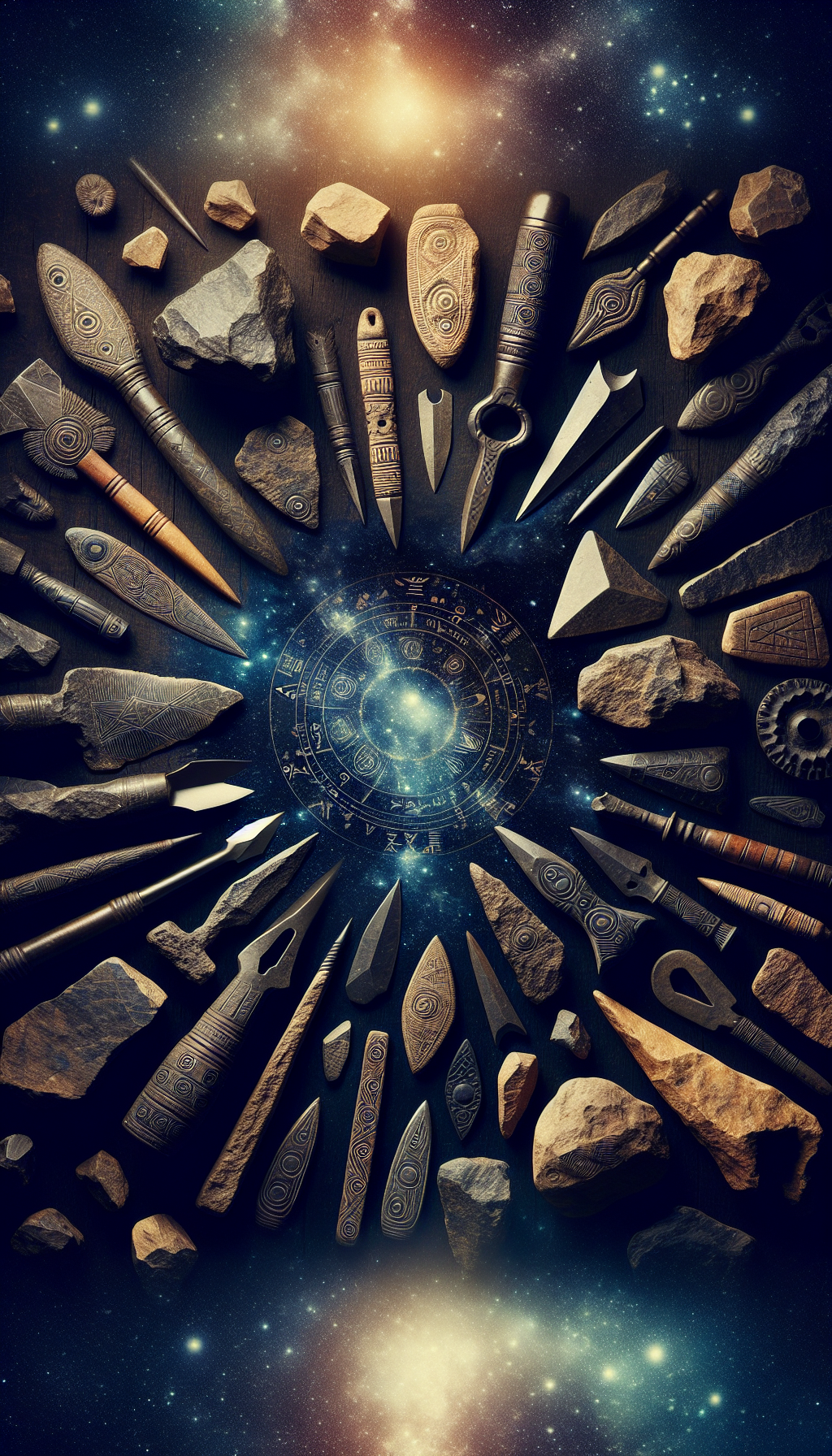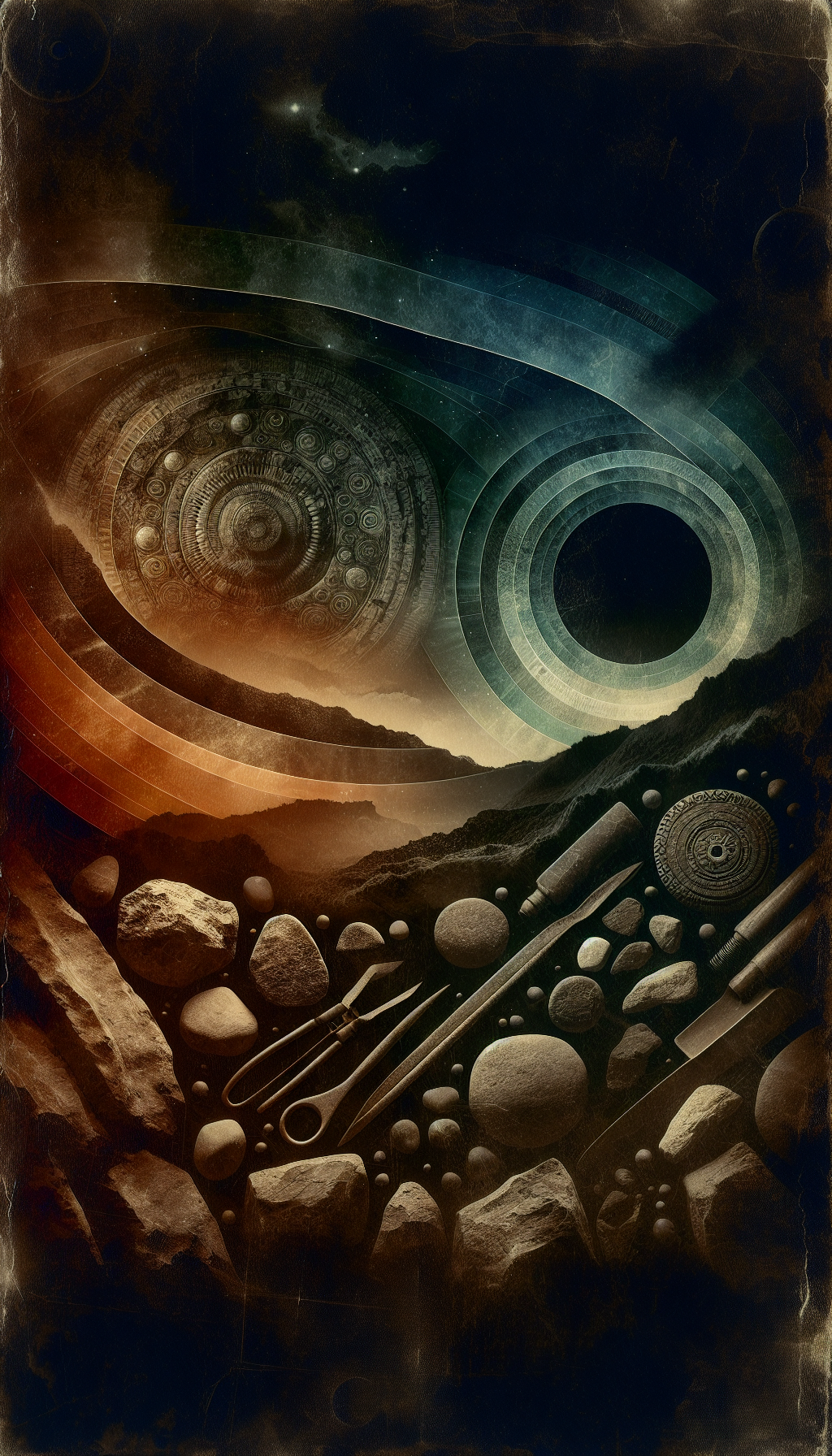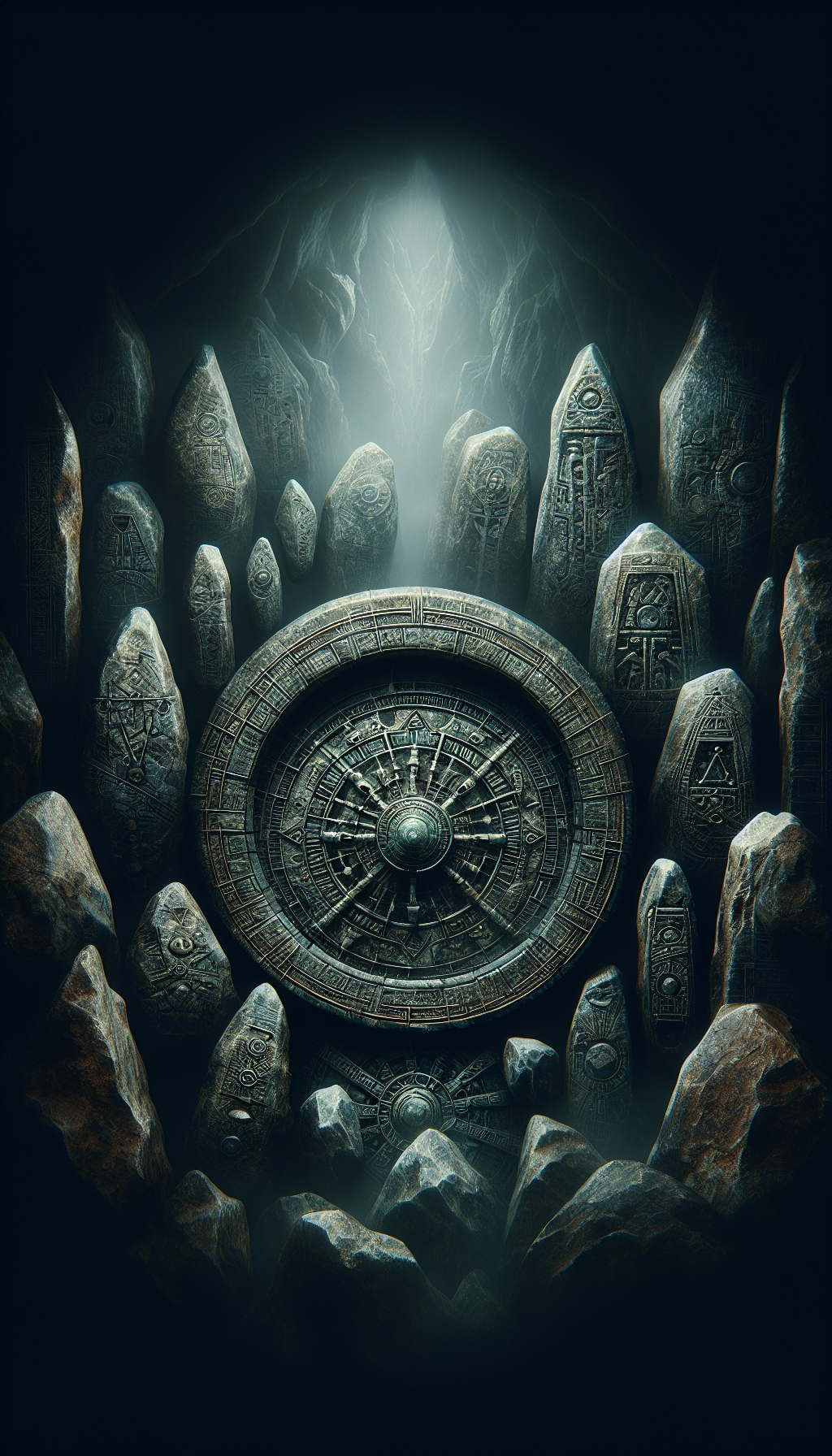Unveiling The Past 5 Ways To Carry Out Accurate Identification Of Indian Artifact Rock With Hole
Rocks with holes—whether drilled, pecked, or naturally formed—capture the curiosity of collectors and appraisers alike. In North America, holed stones attributed to Native American (“Indian”) manufacture include bannerstones, gorgets, pendants, and perforated net sinkers. They can also include naturally holed cobbles and industrial byproducts that fool even seasoned eyes.
This guide distills five field-tested ways to distinguish authentic artifacts from geofacts and later modifications, using observations and non-destructive tests that any serious enthusiast can perform. A quick note on language: “Indian artifact rock with hole” is a common search phrase; within professional practice, “Native American” is preferred. Also note: collecting from protected sites is illegal, and documented, ethical provenance is central to both scholarship and value.
Way 1: Start With Provenience, Context, and Chain of Custody
Before measuring angles or peering at drill striations, lock down the story.
- Where did it come from? Site, county, river drainage, or collection locale matter. Holed slate gorgets cluster in Eastern Woodlands contexts; bannerstones often occur in Late Archaic sites alongside atlatl components.
- Who owned it and when? A chain of custody (finder, date, subsequent owners) helps validate authenticity and legal status. Surface finds from old farm fields with contemporary notes, labels, or collection trays are more credible than recent anonymous purchases.
- How was it acquired? Avoid recently disturbed site finds and material lacking clear legality. Federal, state, tribal, and private land laws differ; when in doubt, consult an archaeologist or attorney, especially before sale or public display.
- Field context matters. Artifacts recovered with associated lithics (drills, prismatic blades, slate preforms) elevate confidence. Solitary beach finds without context demand closer scrutiny.
Why it matters: Provenience is often the strongest single indicator for authenticity and is indispensable for responsible appraisal. For insurance or sale, expect to be asked for provenance documents, collector notes, and any old photos.
Way 2: Evaluate Raw Material and Overall Form
Once you understand the story, examine the stone itself. Raw material and form should align with known traditions.
- Common materials:
- Banded slate, greenstone, and siltstone: frequent for gorgets and bannerstones in the Eastern Woodlands.
- Steatite (soapstone): easier to drill, often for pendants and some utilitarian implements.
- Sandstone: occasionally used for sinkers or abrading tools, but drilled examples exist.
- Chert/flint: less common for large perforated ornaments; small perforated chert pendants occur.
- Form and finish:
- Bannerstones: symmetrical, shaped with high skill, central perforation often tubular; forms include “butterfly,” “hourglass,” and “winged.” Edges typically ground and finished with even bevels.
- Gorgets: flat plaques of slate or similar stone, generally with one to three holes near ends or center; surfaces show careful grinding and edge beveling, sometimes with decorative incising.
- Pendants: small, intentionally shaped stones with a single hole near one margin; expect edge rounding at the suspension point and polish from wear.
- Net sinkers: many are grooved or notched rather than drilled, but perforated examples exist regionally. Usually quick, expedient manufacture, not finely ground.
- Red flags:
- Vesicular, bubbly “stones” with sharp-edged voids may be industrial slag, not artifacts. Slag is often lightweight relative to size and may be weakly magnetic.
- Perfectly uniform modern symmetry in a hard stone without period-appropriate tool marks.
- Inconsistent pairing: exotic stone types uncommon to the stated region or time period without convincing provenance.
Why it matters: Authentic pieces usually show alignment among raw material, regional tradition, and form. Misalignment isn’t proof of fakery, but it raises the bar for evidence.
Way 3: Study the Hole—Drilling Signatures, Taper, and Wear
The perforation holds many of the most decisive clues. Use a 10x loupe or USB microscope.
- Entry and exit geometry:
- Biconical holes: Wider at both faces and narrower at the midpoint, usually formed by drilling from both sides with a hand drill or bow drill. Common on gorgets and some pendants.
- Tubular holes: Parallel walls with subtle concentric striations, often produced with reed or hollow bone plus abrasive slurry; found on many bannerstones and fine ornaments.
- Purely conical holes: Continuous taper from one face may signal modern twist-drilling. Authentic prehistoric conical holes do occur, but expect pecking scars and less uniformity.
- Striation patterns and surface texture:
- Prehistoric abrasive drilling usually leaves concentric rings and fine parallel micro-scratches; walls feel slightly matte under a probe.
- Modern metal bits can leave helical or spiral tool marks, chatter, and a brighter, glazed interior, especially in harder stones.
- Peck-and-grind technique can leave small pits and microfractures at the hole margins.
- Edge and hole rim wear:
- Ancient use-wear shows consistent beveling and rounding around the hole, often with polish from cordage or shaft contact—wider on the stress side.
- Fresh, crumbly hole edges suggest recent drilling or post-manufacture damage.
- “Plug” breakouts at the exit can be natural or modern; evaluate accompanying micro-wear and patina continuity.
- Symmetry and alignment:
- Slight misalignments are common in authentic hand-drilled artifacts. Machine-drilled reproductions often exhibit precise, dead-straight alignment and equal diameters at both faces without mid-necking.
Why it matters: The perforation is the maker’s signature. Hole geometry, microscopic texture, and wear history are among the strongest differentiators between ancient and modern work.
Way 4: Perform Non-Destructive Tests and Measurements
A few careful tests can bolster your interpretation without harming the piece.
- Magnification: 10x–40x reveals striations, micro-chipping, patination, and residues. Note whether polish continues into the hole.
- Metrology:
- Record length, width, thickness, and hole diameter at both faces plus midpoint.
- Bannerstone tips: hole diameters often range roughly from 6–12 mm, with consistent walls; very large, perfectly uniform bores may be suspect.
- Calculate symmetry (left/right wing lengths on bannerstones) and taper ratios; minor hand-made asymmetry is normal.
- Hardness: Use Mohs picks or try controlled scratch tests on inconspicuous spots. Steatite (Mohs ~1–2) scratches easily; slate (Mohs ~2.5–4) is tougher; chert (~7) resists scratching by steel.
- Specific gravity (SG): Weigh dry, then submerged, to approximate SG. Compare results to known values for slate (~2.7–2.9), steatite (~2.6–2.8), and ferrous slag (often lower and vesicular). This can flag non-stone materials.
- Magnetism: A strong magnet reacting to the piece may indicate slag or iron-rich industrial waste rather than an artifact-grade lithic.
- UV/blacklight: Limited use, but modern adhesives, fillers, or coatings can fluoresce. If the hole shows different fluorescence from the surface, suspect repairs or alterations.
- Residue checks: Look for embedded sand, clay, or organic residues within the hole; consistent, aged accretions that also occur in surface micro-crevices favor authenticity.
Why it matters: Objective measurements and simple lab-grade observations counter wishful thinking and provide appraisers with defendable notes.
Way 5: Compare to Typologies and Known Functions
Once physical evidence is in hand, match it to established artifact types and plausible functions.
- Bannerstones (Late Archaic, broadly 5000–3000 BP in many regions):
- Function: often interpreted as atlatl weights or ritual items.
- Diagnostic traits: symmetrical, finely ground forms; central tubular perforation with consistent walls; quality stone (slate/greenstone).
- Red flags: exaggerated fantasy shapes, over-polish without wear diversity, drill signatures inconsistent with abrasive techniques.
- Gorgets (Archaic to Woodland periods):
- Function: personal adornment or insignia.
- Diagnostic traits: flat slabs, 1–3 biconical holes near edges; careful edge beveling; sometimes incised lines.
- Red flags: perfectly cylindrical machine holes; modern engraving styles; mismatched stone type for region.
- Pendants:
- Function: adornment; single suspension hole near edge.
- Diagnostics: asymmetric wear at suspension; localized polish; hole bevel consistent with cord movement.
- Red flags: no wear at suspension; residues of modern cord; sharp drill lips.
- Perforated net sinkers:
- Function: weighting nets or lines.
- Diagnostics: expedient stone choice; utilitarian finish; hole may be crude biconical; wear consistent with wet use.
- Red flags: high-finish luxury stones; overly perfect cylindrical holes without wear.
- Utilitarian tools with holes:
- Some hammerstones or abrading stones bear holes for hafting or suspending; expect heavy edge wear, pecking, and utilitarian finishing.
Why it matters: Function leaves signatures. When the hole, material, and wear align with a known category and regional tradition, the identification moves from “possible” to “probable.”
Practical checklist
- Record provenance: who, where, when, and how acquired; attach any labels or notes.
- Photograph in natural light: full views, edges, hole close-ups, 10x–40x microscope images.
- Measure: dimensions, hole diameters at both faces and midpoint; note symmetry.
- Inspect hole: biconical vs tubular; striation type; rim bevel; polish continuity.
- Assess material: stone type, hardness, SG estimate; test magnetism to rule out slag.
- Evaluate wear: consistent edge rounding and polish vs sharp, fresh surfaces.
- Compare to typology: bannerstone, gorget, pendant, sinker; check regional plausibility.
- Document condition: chips, repairs, coatings; note any fluorescence under UV.
- Decide next steps: keep as reference piece, seek expert opinion, or refrain from purchase.
Short FAQ
Q: Is a perfectly round, straight, glass-smooth hole proof of authenticity? A: No. In fact, it often signals modern drilling with metal bits. Many authentic holes are subtly biconical or show abrasive drill striations and matte interior walls.
Q: Can a natural stone have a hole that looks drilled? A: Yes. Solution cavities in limestone or wave-bored beach cobbles can mimic drilling, but typically lack intentional symmetry, show irregular outlines, and do not display consistent interior striations or edge beveling from use.
Q: Does heavy patina guarantee age? A: Patina helps, but can be misleading. Some patinas develop quickly in certain soils; others can be artificially induced. Look for consistent patina extending into micro-cracks and hole interiors alongside genuine wear patterns.
Q: Are all bannerstones perforated the same way? A: No. While many feature tubular holes from abrasive drilling, variation exists by region and craftsman. Expect minor wall irregularities, non-machine-perfect alignment, and period-appropriate tool marks.
Q: What increases appraisal value the most? A: Solid provenance and typological fit in fine condition. A documented findspot, period-correct material and hole signature, careful manufacture, and authentic wear collectively drive both scholarly and market value.
Closing guidance
Accurate identification of a rock with a hole hinges on stacking convergent evidence: provenance, material and morphology, perforation signature, non-destructive test results, and typological fit. No single clue is definitive, but together they separate authentic Native American artifacts—bannerstones, gorgets, pendants, and utilitarian pieces—from natural holed stones and modern fabrications.
When your observations support authenticity yet stakes are high, consult a qualified archaeologist or an appraiser experienced in pre-contact North American material culture. Preserve the piece as you found it; avoid aggressive cleaning, which can erase decisive microscopic evidence. Your patience and documentation not only safeguard value—they honor the past you’re unveiling.



